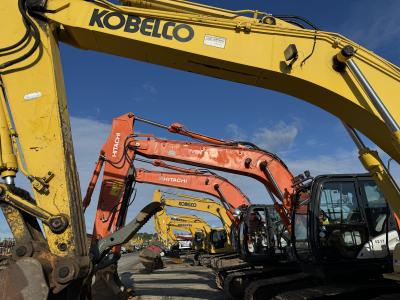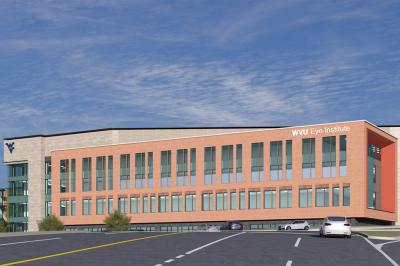One-hundred-year-old Montclair State University, New Jersey’s second-largest university, is the site of construction of two new buildings on its Essex County campus. Over the past 15 years, enrollment has dramatically increased, due to — in Vice President of university facilities Greg Bressler’s words — the “outstanding leadership” of President Susan A. Cole.
According to university figures, enrollment has seen a growth of 36 percent, from 13,502 in 2000 to 18,382 in 2012. Despite increasing academic space by 73 percent (to 1.3 million sq. ft.) during that same time frame, Montclair still lags behind its similar universities in space.
Created in 1908, Bressler said Montclair “has been under-built in comparison to its peers.” Ranked first in the state by Forbes Magazine as one of “America’s Best Colleges,” the public school is situated on 252 acres, over which are spread 60 buildings. Nevertheless, Cole considers these two new buildings “urgently needed.”
Two for One
The two buildings are being treated as one project under a single construction contract, Bressler said.
“Given the sophistication of the work, it’s the best way to manage it if we do it as one project — better for communication, scheduling, delivery of materials, manpower and inspections.”
Designed by two architectural and engineering teams, the project, which carried a total budget of $121 million, with $92 million for construction, was let to bid with one set of bid documents as soon as funding was available.
In April 2013, the state of New Jersey made available potential capital funding resources through the Building Our Future Bond Act to increase academic capacity at educational institutions, the Higher Education Capital Improvement Fund Act, the Higher Education Facilities Trust Fund Act, the Higher Education Technology Infrastructure Act, and the Higher Education Equipment Leasing Fund Act.
Contracts were signed in August, with Terminal Construction out of Wood Bridge, N.J., serving as general contractor.
Work started immediately on the project that is expected to generate 1,500 construction and support jobs.
The timing was dictated by the bond grant review decision-making process, Bressler explained.
“We would have been penalized if we started early.”
One Plus One
The new Center for Environmental Sciences — CELS — is being built on the east side of campus, overlooking the New York City skyline. Part of the College of Science and Mathematics, it will consist of 107,500 gross sq. ft. for academic purposes. Key features will include instructional and research space; a 150-seat lecture hall, classrooms, seminar rooms, a micropsy suite, office suites, lounge areas, six core research labs and seven flexible research labs detailed for inter-disciplinary research in chemistry, biology and microbiology. Out of the total cost of $55 million, $39,284,000 comes from state grants.
The other structure under construction is a new School of Business building on the west side of campus. The six-story building adjacent to University Hall comprises 143,000 gross sq. ft. When completed, it will contain administrative offices, conference and seminar rooms, a 150-seat lecture hall, 23 classrooms, a breakout room for group study, an executive education instructional facility, computer labs, a grading room, a faculty research room and a dining facility.
According to the University, a separate entrance from the covered parking area will bring visitors to a lobby that provides elevator access to the floors above or a master staircase that leads to the cafeteria or the building atrium on the first floor. Entrance to the first floor will be either from the upper quad through the main lobby or from the lower level master staircase.
The building is designed around a central atrium that connects the remaining five floors with a monumental stair. The first and second floors are designed to create a dynamic, energetic feel that supports student needs and services. The purpose of these floors is to create a series of transparent and semi-transparent spaces where student and faculty can meet and intermingle, accomplished via the use of wood-framed glass doors and window systems. The atrium on the second floor is ringed by additional small group study rooms and the graduate lounge, all of which have large windows overlooking the floor below.
Designed to complement the Spanish Mission architectural style of other campus buildings, the building exemplifies the University’s commitment to sustainable design and the intent to achieve a Silver LEED rating.
Total project cost is $66 million. Of that, $46.8 million comes from state of New Jersey Higher Education Bonds. The University is matching funds for the difference in cost for both buildings, Bressler noted.
Timeline
A total of 300 people (150 tradespersons on each building) have been working 6 days a week, 12 hours a day during most of the excavation and foundation work — not just to meet the July 2015 deadline, but to beat winter.
“Our goal is to get the steel up so we can wrap the buildings — temporarily enclose and heat them so we can work through the winter,” Bressler said.
On Dec. 20, they held a topping-out ceremony on the CELS building and expect to have another one in mid-January for the SBUS building. After inviting the board, construction staff and the academic community to sign it, the uppermost beam of significant steel was set, and a flag and Christmas tree placed on top.
It marks a milestone. As Cole promised, the University was “shovel-ready” and poised to start work as soon as the funds were disbursed. Once they were, crews first had to demolish an old music building on the site of the CELS building. The new John Cali School of Music had already been constructed on another part of campus, leaving a concrete slab to be removed. Similarly, the site for the new SBUS building was a former tennis court and temporary parking lot.
Although the University is on a former rock quarry that posed minor excavation issues, Bressler said the virgin rock and backfilled areas were removed with industry-standard excavators with little issue.
A modest amount of fill dirt was brought in. Most was borrowed from the excavation and reused for filling.
Steel began arriving in November, Bressler said: 900 tons (816 t) of it for the steel-frame CELS building and 1,100 tons (998 t) of structural steel for the SBUS building. A 250-ft. (76.2 m) tire-mounted lattice boom crane set the steel.
“We set the first three floors on one building, then moved to the other site and did the same. That allows us to get the material up so we could pour the floor slabs and tighten up and align the steel.”
The CELS will require 8,700 cu. yds. (6,651 cu m) of concrete; the SBUS building, 4,000 cu. yds. (3,058 cu m) of concrete. Both will feature an exterior façade of EIFS system — plastered and painted white look to match the Mission architectural style. Often referred to as “synthetic stucco” because of its appearance, the exterior insulation and finishing system is an exterior wall cladding system that provides an insulated finished surface of composite material. Not only does it contribute to the Mission look, it also provides the “highest quality physical environment,” according to Bressler.
The buildings will be completed with Low-E glass and red clay tile roofs.
According to Bressler, this is the first capital support in the last 25 years from the state of New Jersey. Previously, projects were funded through N.J. Education Facilities Authority.
“We repay the principal and interest.”
Projects under those conditions include a new residential hall for $225 million completed three years ago and a co-gen energy plant for $90 million completed in August, both of which were public-private partnerships.
“I’m looking forward to state participation,” he concluded.
Today's top stories















